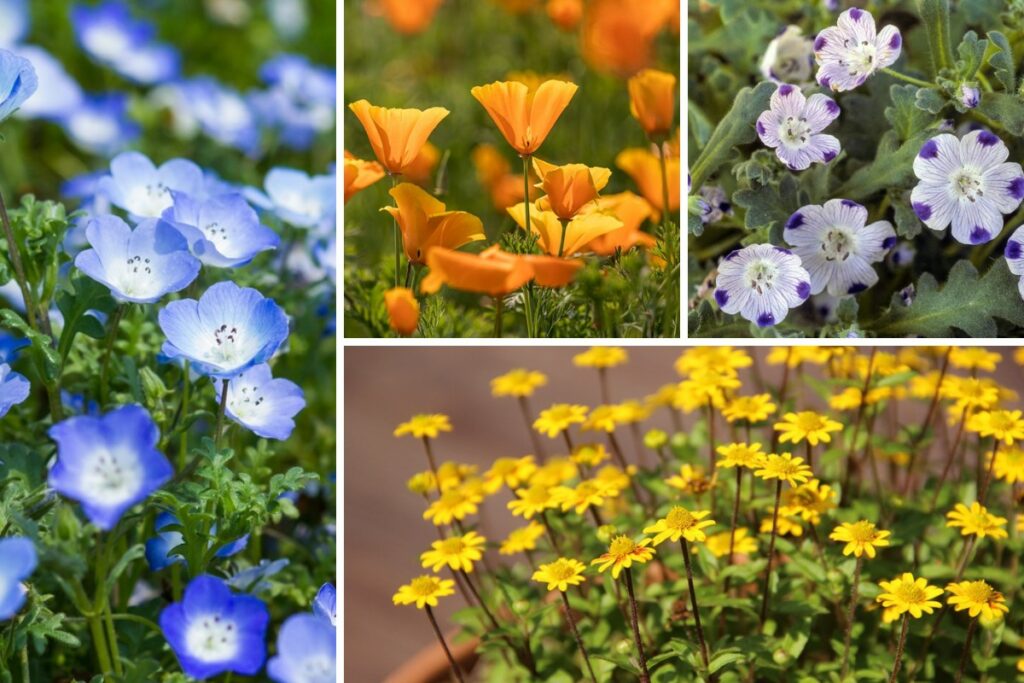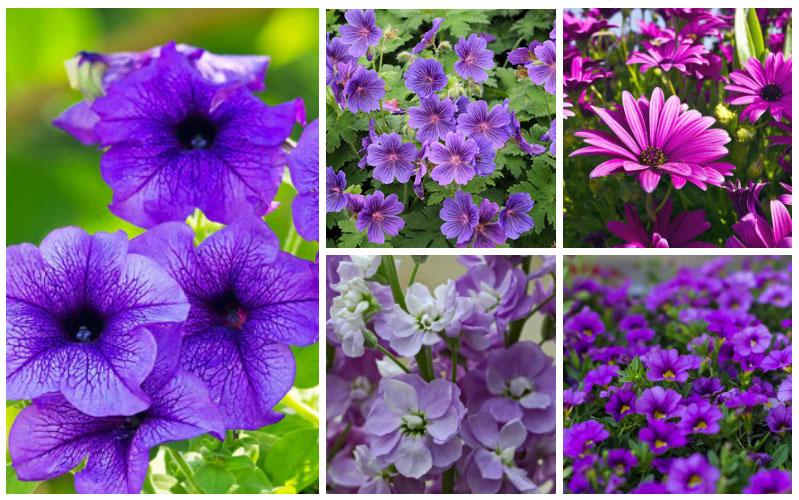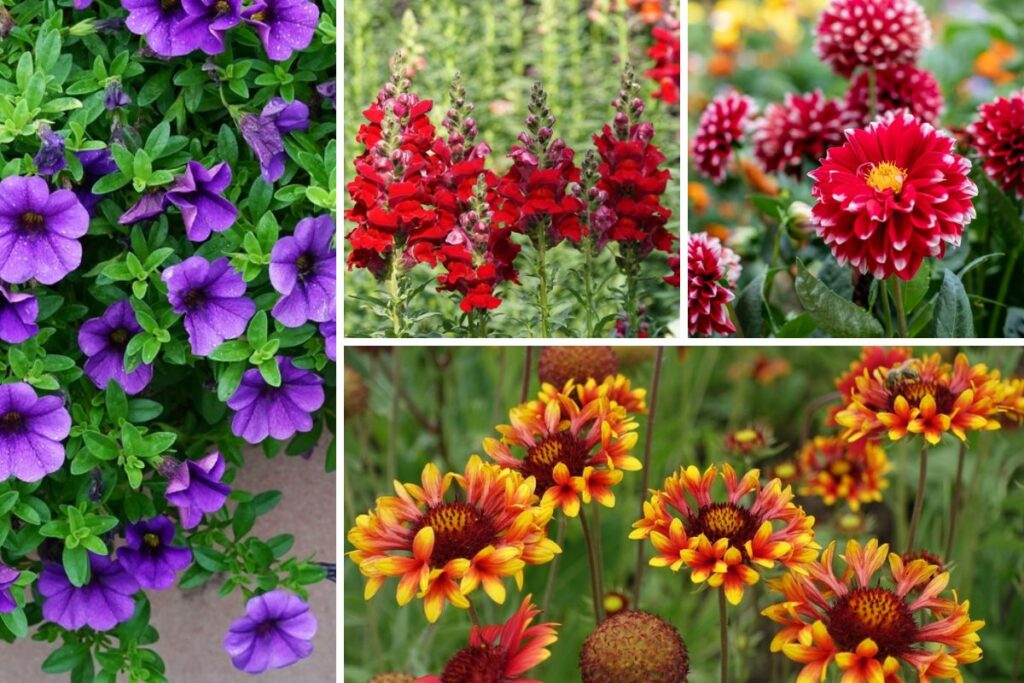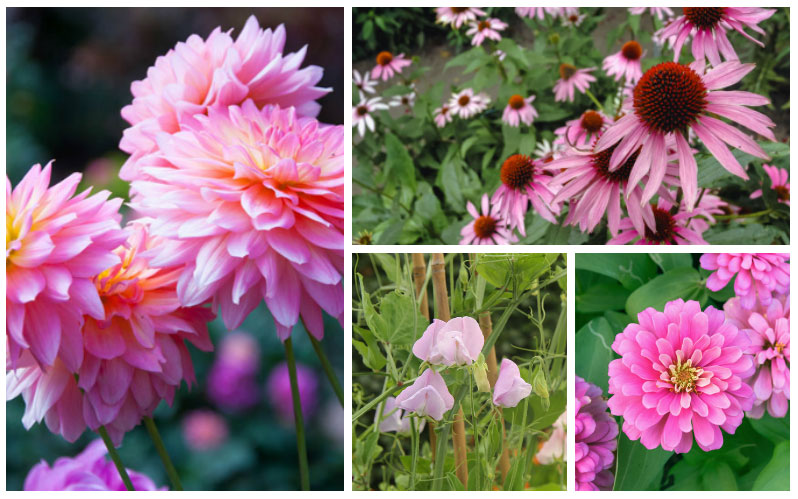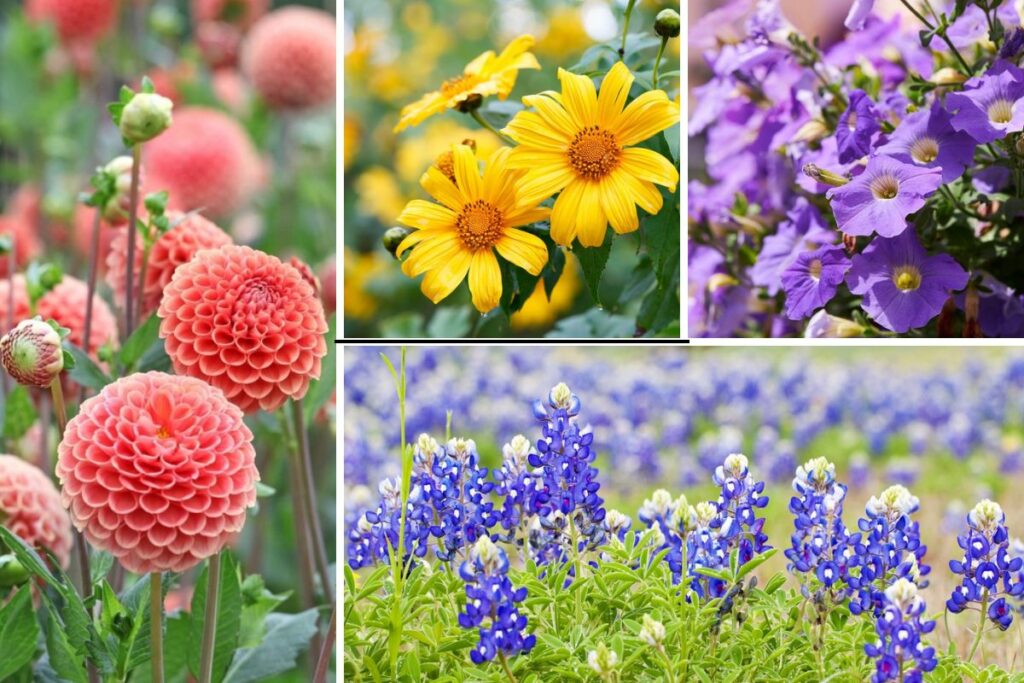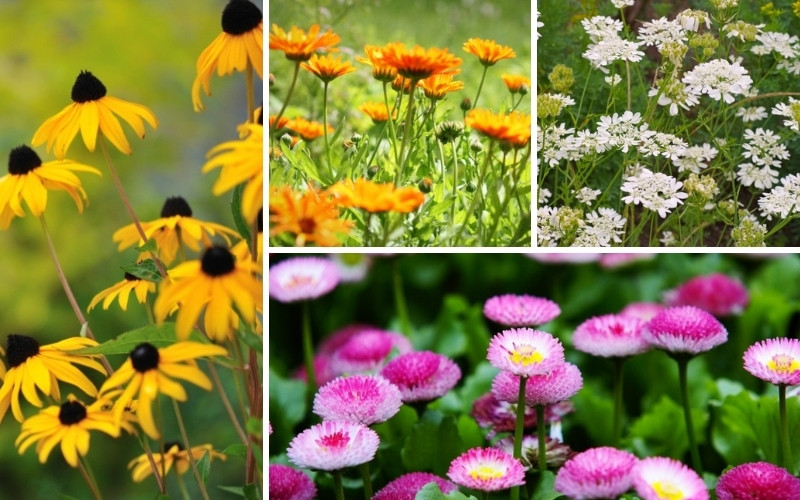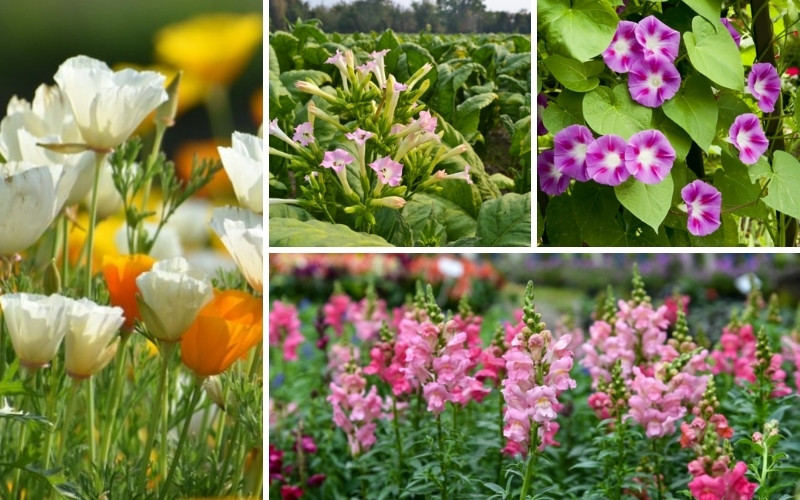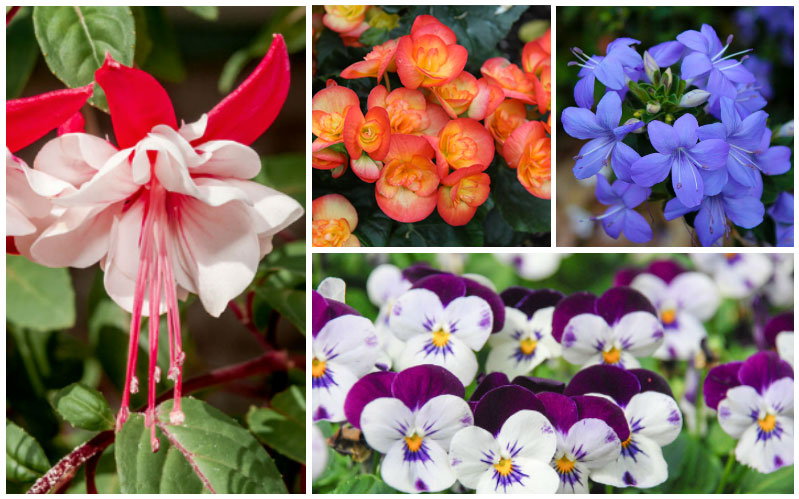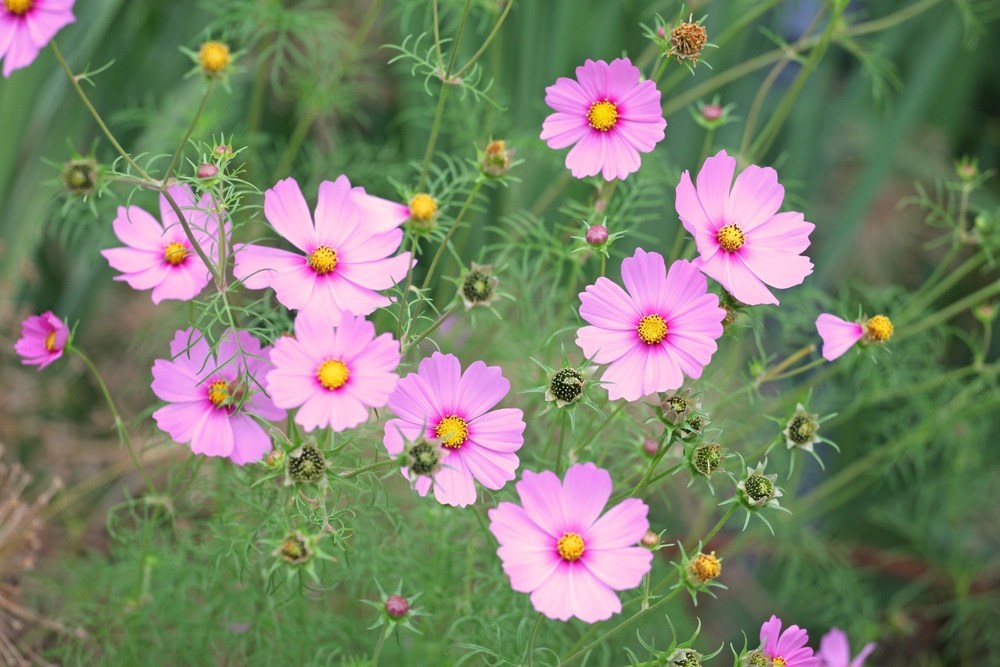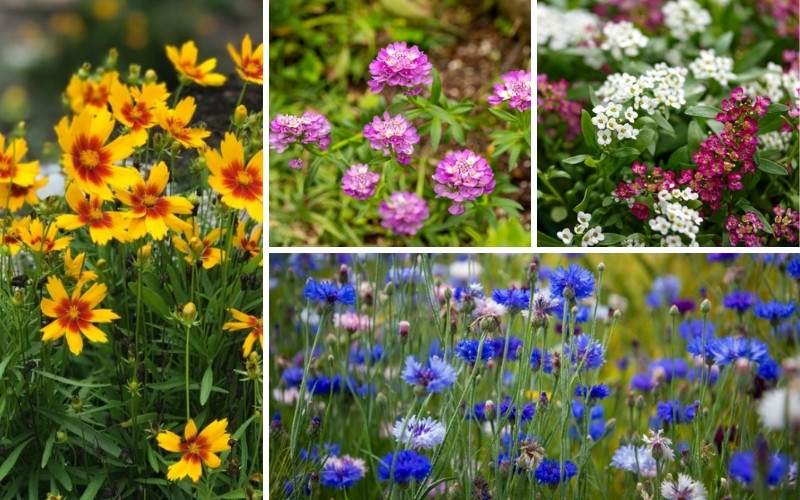
Growing annuals is a different experience from growing perennials. They bloom throughout the entire growing season and do so in a way that brightens your garden.
Many popular annuals are also self-sowing, which means that they sow across your garden without any extra help from you. Year after year, you’ll be able to watch these flowers grow and bloom in your garden without having to repot a sprout or sow the seeds yourself.
Here are some of the more popular self-sowing annuals:
Sweet Alyssum
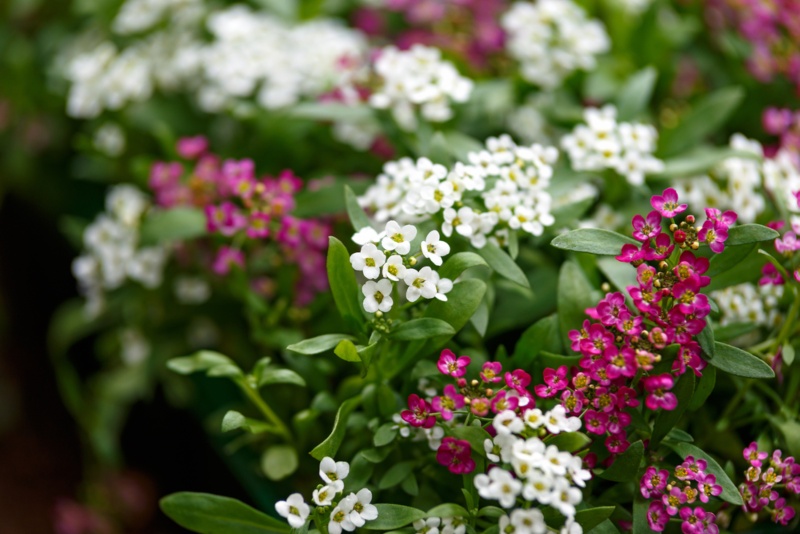
Lobularia maritima, or sweet alyssum, is a small plant that blooms into colorful flowers during the spring and fall. It stands only six to nine inches tall, making it great for the bed of your flower garden. It’s often called the carpet flower because of its small stature and appearance when in full bloom.
This flower typically grows in the 5-9 Hardiness Zone and requires no less than partial shade and moist soil to grow well. It can do well in both neutral and acidic soils, but not basic.
Cornflower
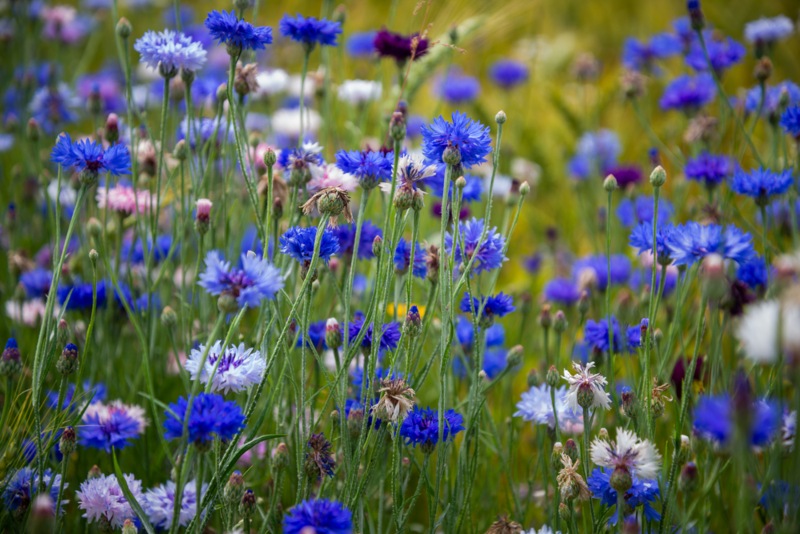
This tall, vibrant flower adds a splash of blue that’s hard to replicate with other blooms. The dark blue of the petals stands out from the rest of the greenery in your garden. This plant’s large flowers and quick growing time make it a popular choice for focal points in a garden.
Cornflowers can do well in both full sunlight and partial shade but are particular about their soil composition. They grow best in soil that has an average moisture level and is slightly basic or alkaline.
Candytuft
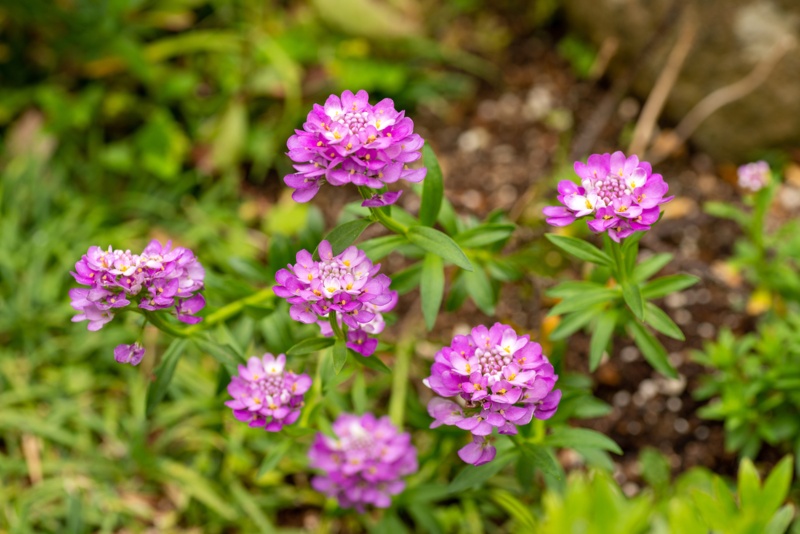
Candytuft, or Iberis Sempervirens, is another short annual in stature but large in its use. While commonly used for lining paths, this flower’s white or pink flowers can brighten up your garden with minimal work.
Candytuft does best with full to partial sunlight and well-drained, alkaline soil. The flower grows best in Hardiness Zones four through eight. It blooms in the springtime after reaching maturity, which doesn’t take long after germination.
Coreopsis
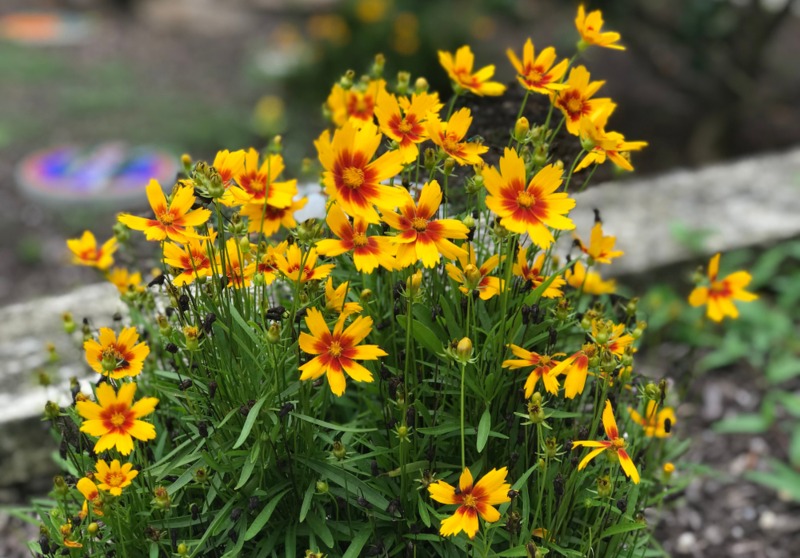
These daisy-like flowers are another low-maintenance bloom to add a splash of color to your garden. There are over 80 varieties of this flower, meaning that they can offer various colors and petal shapes for your garden. It grows into tall clumps of blooms, making it great for filling out or lining a flower bed.
Coreopsis grows best when given full sunlight and sandy, well-drained soil. They bloom in the summertime and come in many different warm colors. Also, Coreopsis doesn’t have many pests or disease problems, further proving its low maintenance status for your garden.
Black-Eyed Susans
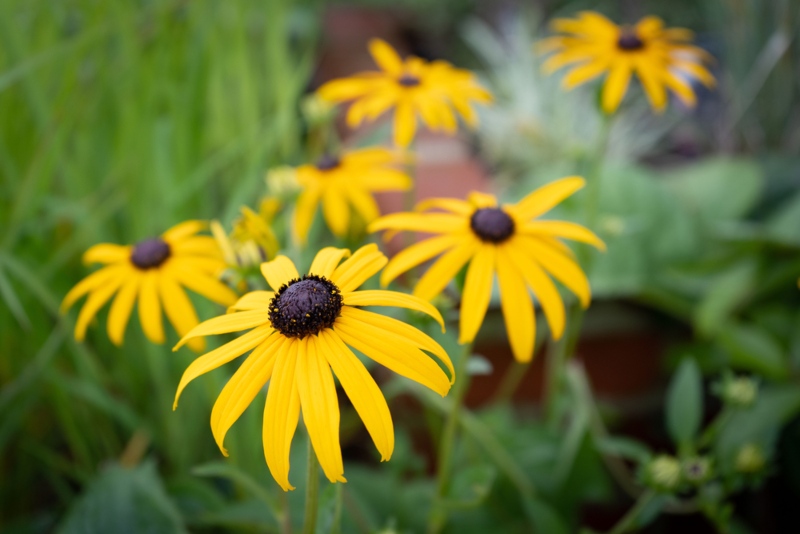
Part of the Rudbeckia family, these flowers are easily identified by their bright petals, dark central disks, and scratchy leaves. Since they grow fast and have a unique petal pattern, Black-eyed Susans are another popular self-sowing annual. While their petals are always yellow, this flower comes in different heights, ranging from one foot to nine feet tall.
Generally found in the three to seven Hardiness zones, these flowers like full sunlight and moist, well-drained soil. These are the same conditions of the flower’s native origin in the Midwest United States.
Love-In-A-Mist
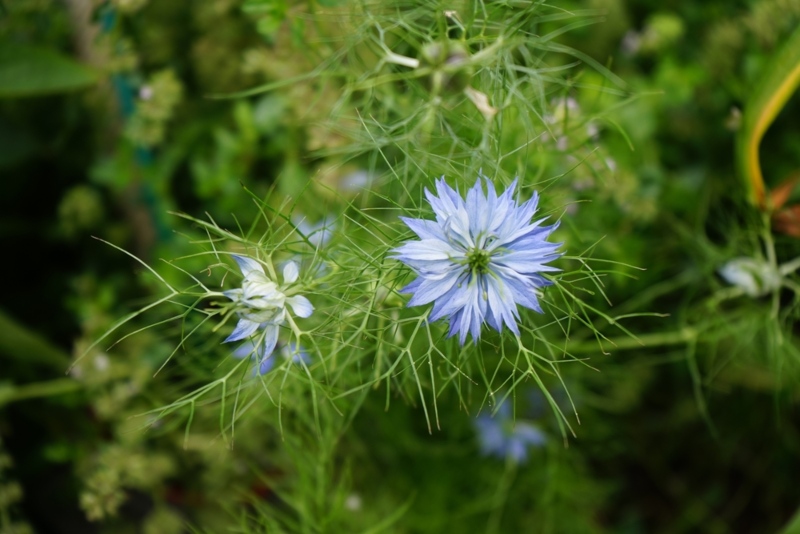
This flower gets its name from the airy-looking bracts and foliage that surround the flower once it blooms. Though there are different varieties, the iconic blue blossom of the flower is what many gardeners will think about when talking about love-in-a-mist.
These flowers are very hardy, working with both full and partial sunlight and many different soil types. For the soil, as long as it is well-drained, this flower can do well. This flower blooms starting in late spring, and up through the fall season, so you’ll have blooms to look forward to for most of the year.
Nasturtium
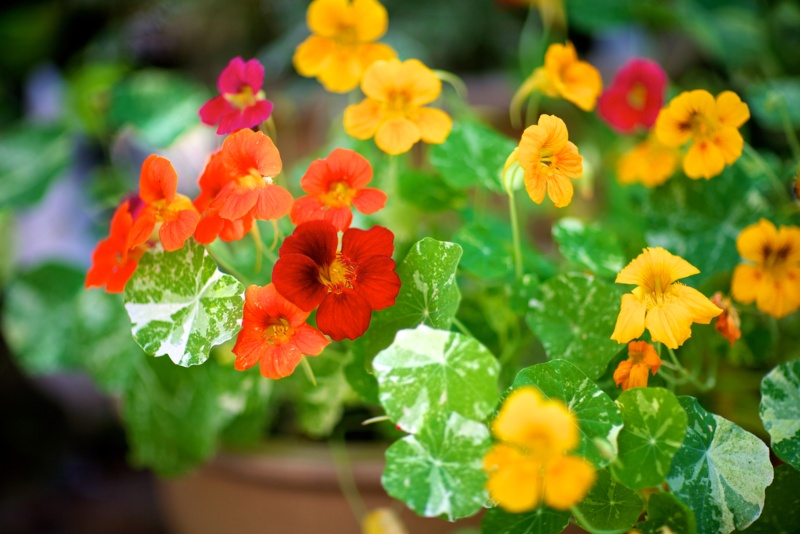
Gardeners love these members of the Tropacolum family for their jewel-like petal colors and their lack of maintenance. These flowers tend to do well when ignored for short periods. This holds for all the different varieties of nasturtium as well, making them a versatile and simple addition to most gardens and landscapes.
Full access to sunshine and moist soil will put these flowers in the best spot for them to grow tall quickly. Nasturtiums are found in the two to eleven Hardiness zones. They bloom from May to September when well-tended.
Pot Marigolds
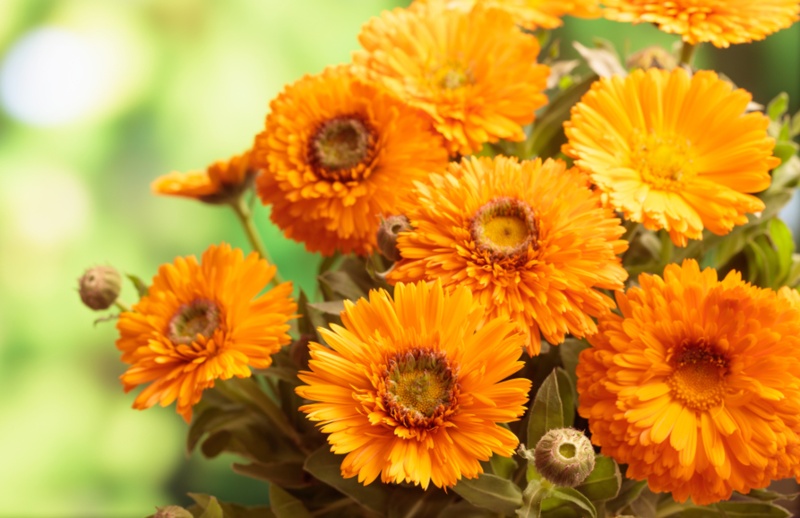
These flowers from the Calendula family are not related to marigolds, despite their name. The similarities to marigolds are apparent when you see the bloom colors and shapes that the different varieties of this plant can produce, though. Pot marigolds are great as annuals for flower beds and garden containers.
Full sunlight or partial shade works best for these blooms. They prefer well-drained soil and a neutral soil pH, as well. Pot marigolds grow best in the nine to eleven Hardiness Zones, so make sure that your environment will suit these flowers before growing them yourself.
Sweet Peas
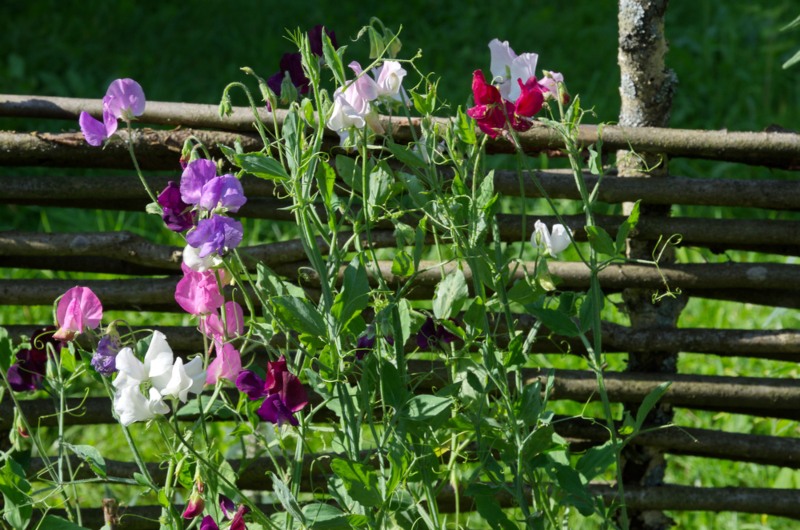
Brightly colored and fragrant, sweet peas make a wonderful addition to a cottage garden or other household landscapes. This member of the Lathyrus family grows to be quite tall when mature, usually in the six to eight feet range. By removing the spent blooms over the year, sweet peas can bloom for the entire year.
Sweet peas prefer loamy soil and plenty of sunlight. Partial shade is okay, but full access to the sun will help these plants shoot up fast. The blooms come in many different colors and (outside of the requirements listed) aren’t difficult to maintain.
Verbena
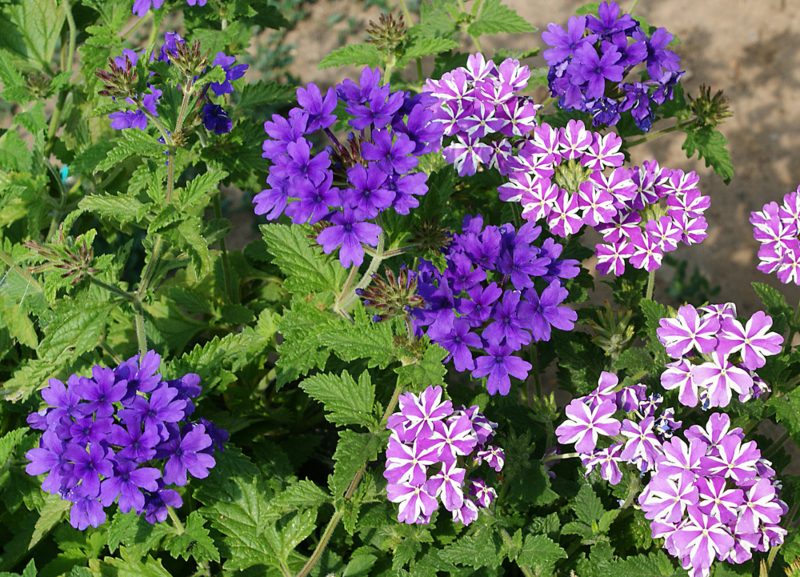
This massive family of about 250 species is often crossed with other plant species as different cultivars. Verbenas are often used as bedding plants for large pots and containers. The annuals in this collection of flowers can bloom over the entire year if properly tended to.
To raise verbena, they should be planted in full sunlight in dry to medium moisture soil. They tend to prefer acidic soil, but neutral pH soil can work as well. A little slow-release fertilizer can help these flowers grow to their full size in just a few weeks if all other needs for this flower are met.





